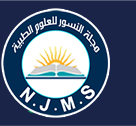Abstract
Nosocomial infections with MRSA (Multidrug resistance Staphylococcus aureus) is a significant problem during medical care for hospitalized patients. Biofilm formation made this problem worse due to increase time for cure and costs for treatment. This study focused light on MRSA isolates and aimed to determine the best method used for biofilm formation detection methods. In this study clinical isolates included MRSA isolated from Post-operation infections (hernia and caesarean section), Skin trauma infected wounds, Burns infections and Urinary tract infections (UTI). Results showed that the isolates obtained from UTI and Burns infections were more aggressive in that most of them were able to form biofilm. Also, using the two methods for biofilm formation detection; visible evaluation and spectrophotometer optical density estimation, is the best way for obtaining an accurate results to be depended in MRSA biofilm formation ability.
First Page
78
Last Page
89
Recommended Citation
Al-Hamadany, Weam Saad
(2021)
"A comparison study for biofilm formation ability in Nosocomial MRSA using two detection methods,"
Al-Nisour Journal for Medical Sciences: Vol. 3:
Iss.
1, Article 7.
DOI: https://doi.org/10.70492/2664-0554.1060

